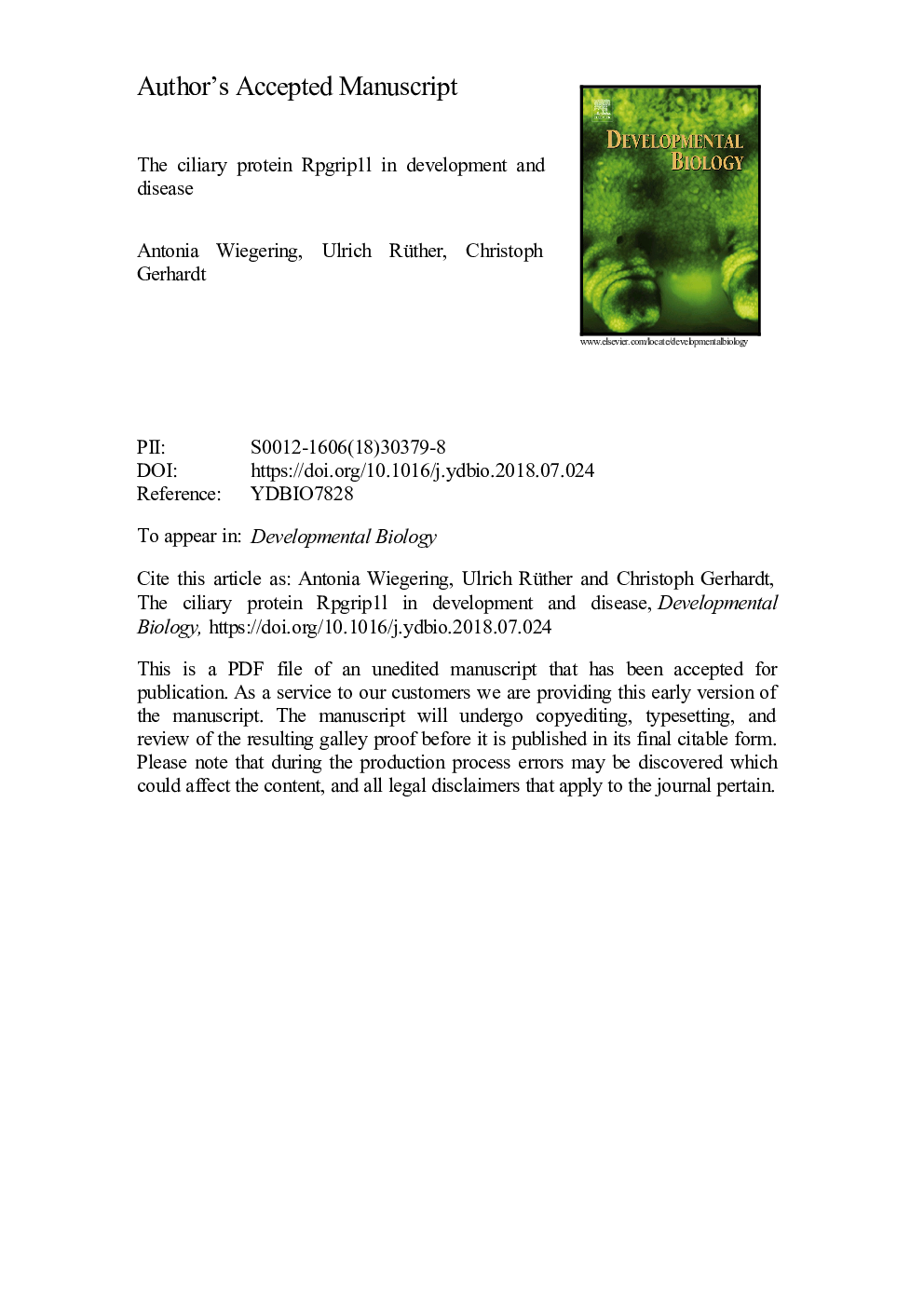| Article ID | Journal | Published Year | Pages | File Type |
|---|---|---|---|---|
| 10157810 | Developmental Biology | 2018 | 42 Pages |
Abstract
RPGRIP1L is an evolutionary highly conserved gene encoding a protein that localises at the transition zone of primary cilia. Mutations in RPGRIP1L result in ciliopathies, severe human diseases caused by dysfunctional cilia. Patients with mutations in this gene often suffer from an impaired development of not only one but various organs. To elucidate the function of Rpgrip1l in human development and the mechanisms underlying ciliopathies, different model organisms are used. In this review article, we summarise the findings of these investigations comprising novel functions of Rpgrip1l and the most promising therapeutic approaches.
Keywords
IRDNPHPIRX3MKSInVSFused toesCEP290inherited retinal dystrophyGLI3PDGFRαCUX1RPGRMDCKLEPRRetinitis pigmentosaLC3C. elegansSFNCRDHEK293TGFβmTORMEFsBBSNrf2FtMLCABasal bodydishevelledTransforming growth factor βTectonicHedgehogridFTODßHembryonic daylight chain 3inversinMadin-Darby canine kidney cellsBardet-Biedl SyndromeJoubert syndromeSulforaphaneFANTOMnuclear factor erythroid 2-related factor 2Mad2Coachmouse embryonic fibroblastsmegabaseCaenorhabditis eleganshuman embryonic kidney 293Coiled-coilplatelet-derived growth factor receptor αLeptin receptor
Related Topics
Life Sciences
Biochemistry, Genetics and Molecular Biology
Cell Biology
Authors
Antonia Wiegering, Ulrich Rüther, Christoph Gerhardt,
